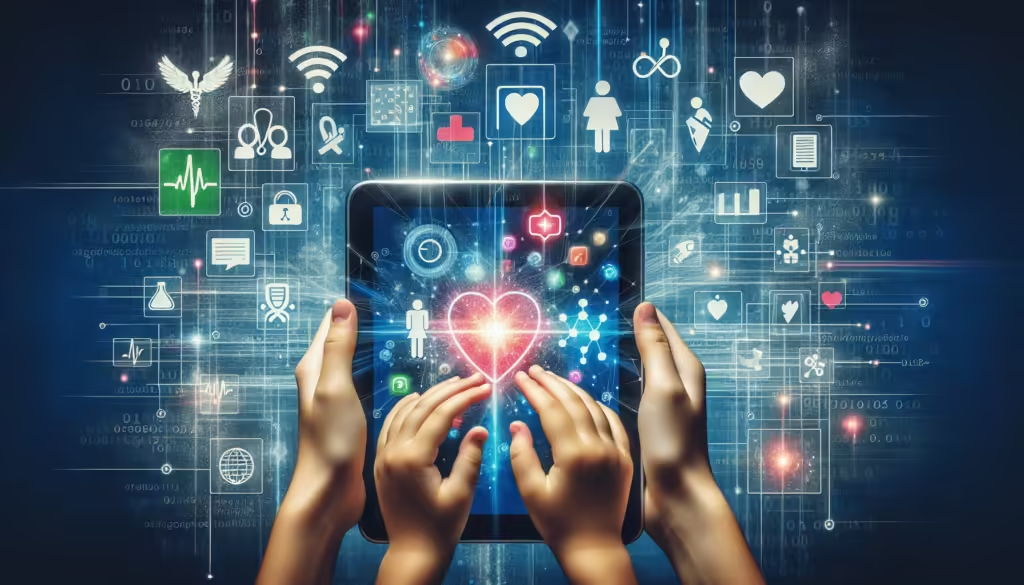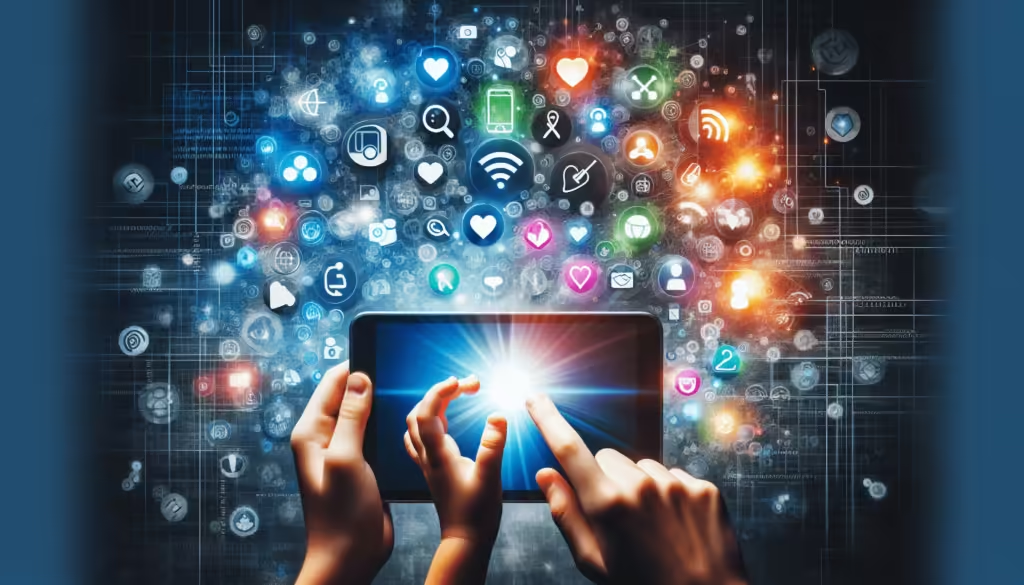How has technology transformed the health of children and adolescents over the past few decades? The rapid advance of technology has significantly impacted many aspects of our lives, influencing fields as diverse as education, communication, and entertainment. However, one area that has perhaps seen the most profound change is the health of children and adolescents.

This image is property of images.pexels.com.
Table of Contents
Overview
In today’s digital age, technology plays a central role in the lives of young people. From smartphones and social media to video games and online learning tools, technology is ubiquitous. While the benefits of these advancements are evident in many ways, there are also concerns about the potential negative effects on young people’s health.
Thesis Statement
The influence of technology on child and adolescent health is multifaceted, with both positive and negative aspects. It is crucial to understand these impacts to fully appreciate the benefits while mitigating the risks. This article delves into historical contexts, current trends, key concepts, and future implications to provide a comprehensive understanding of this complex issue.
Historical Context
Early Exposure to Technology
In the late 20th century, personal computers became more accessible to the general public. Initially used primarily for educational purposes, these devices gradually found their way into homes, introducing children to a new world of learning and leisure. At that time, technology’s influence was largely seen as positive, with educational programs designed to enhance cognitive development and learning skills.
The Rise of the Internet
The advent of the internet in the mid-1990s marked a turning point. With the introduction of the World Wide Web, children gained unprecedented access to information and communication tools. The internet enabled distant learning, connecting classrooms across the globe. However, it also introduced challenges such as exposure to inappropriate content and Cyberbullying.
Current Trends
Increased Screen Time
One of the most significant trends in recent years is the increase in Screen time. According to a report by the American Academy of Pediatrics, children aged 8-12 spend an average of 4-6 hours per day on screens, while teenagers spend up to 9 hours. This increase in screen time has raised concerns about various health issues, including eye strain, sleep disturbances, and sedentary behavior.
Benefits of Educational Technology
On the positive side, technology has revolutionized education. Digital learning platforms, virtual reality, and educational apps have made learning more interactive and accessible. For instance, children with learning disabilities can use specialized software to improve their academic performance, while remote learning has made education more accessible during the COVID-19 pandemic.
Key Concepts and Definitions
Screen Time
Screen time refers to the amount of time spent using devices with screens, such as televisions, computers, smartphones, and tablets. It is a crucial factor in assessing the impact of technology on health.
Cyberbullying
Cyberbullying involves the use of digital platforms to harass, threaten, or demean others. This form of bullying can have severe psychological effects, leading to anxiety, depression, and even suicidal thoughts among affected youths.
Digital Learning
Digital learning encompasses all forms of learning facilitated by technology, including online courses, educational software, and virtual classrooms. It aims to enhance traditional educational methods and provide more flexible, personalized learning experiences.

This image is property of images.pexels.com.
Breaking it Down
Physical Health
Sedentary Lifestyle
Increased screen time often correlates with a more sedentary lifestyle. Children and adolescents spending extended periods on screens are less likely to engage in physical activities, which are critical for their physical development. A sedentary lifestyle can lead to obesity, cardiovascular issues, and other health concerns.
Eye Strain and Sleep Disorders
Excessive screen time, particularly before bedtime, can cause eye strain and disrupt sleep patterns. The blue light emitted by screens interferes with the production of melatonin, a hormone that regulates sleep. Consequently, many young people experience reduced sleep quality, which can impact their overall health and academic performance.
Mental Health
Anxiety and Depression
The ubiquitous presence of social media has been linked to increased levels of anxiety and depression among adolescents. The pressure to maintain an idealized online persona, coupled with exposure to cyberbullying, can lead to significant psychological distress. Studies have shown that heavy social media use is associated with feelings of inadequacy and loneliness.
Attention Deficit
Tech-savvy children often show signs of shorter attention spans. The constant influx of information and the appeal of instant gratification from digital activities may impair their ability to focus on tasks requiring prolonged concentration. This trend has sparked concerns about the long-term implications for academic and professional achievements.
Social Development
Reduced Social Interactions
Excessive use of technology can hinder face-to-face social interactions. Children who spend more time on screens may miss opportunities to develop essential social skills such as empathy, communication, and conflict resolution. This shift can impact their ability to form meaningful relationships and navigate social complexities.
Positive Online Communities
Conversely, technology offers platforms for young people to connect with peers who share similar interests and experiences. These digital communities can provide support and a sense of belonging, particularly for those who may feel isolated in their offline lives.
Case Studies and Examples
Case Study 1: The Impact of Video Games
Video games have often been blamed for promoting violence and aggressive behavior in children. However, not all effects are negative. For example, games like “Minecraft” and “Roblox” encourage creativity and problem-solving skills. Moreover, multiplayer games can enhance teamwork and strategic thinking. A study by Oxford University found that playing video games in moderation can contribute positively to mental well-being.
Case Study 2: Social Media’s Duality
The influence of social media on adolescents is a double-edged sword. Platforms like Instagram and TikTok can provide a creative outlet and a sense of community. On the other hand, they can also lead to issues such as body image concerns due to the portrayal of unrealistic beauty standards. A study published in The Lancet Child & Adolescent Health journal showed that excessive social media use is linked to poor mental health outcomes in teenagers.

This image is property of images.pexels.com.
Comparing Different Points of View
| Aspect | Positive Perspective | Negative Perspective |
|---|---|---|
| Educational Technology | Enhances learning through interactive content and access | Can be distracting, potentially reducing attention spans |
| Social Media | Fosters connections and communities | Causes anxiety, depression, and cyberbullying |
| Video Games | Develops cognitive and problem-solving skills | Possible link to aggressive behavior and sedentary lifestyle |
| Screen Time | Provides entertainment and educational benefits | Leads to physical health issues such as eye strain and obesity |
Impact Assessment
Positive Impacts
- Enhanced Learning: Educational technology has made learning more accessible and engaging, catering to different learning styles and needs.
- Increased Connectivity: Technology enables young people to connect with peers, mentors, and communities beyond geographical limitations.
- Development of Technical Skills: Early exposure to technology helps children develop essential technical skills, preparing them for future careers in a digital world.
Negative Impacts
- Physical Health Concerns: Sedentary lifestyles, eye strain, and sleep disorders are significant health issues linked to excessive screen time.
- Mental Health Issues: The pressure of social media, exposure to cyberbullying, and constant stimulation can lead to anxiety, depression, and other mental health problems.
- Social Skill Deficiency: Overreliance on digital interactions can impede the development of crucial social skills necessary for real-world engagements.

Future Directions and Implications
Predictions
The future will likely see a continued integration of technology in all aspects of life, further changing how children and adolescents interact, learn, and grow. Innovations in artificial intelligence, virtual reality, and augmented reality could revolutionize education and entertainment. However, these advancements will also necessitate more comprehensive strategies to mitigate potential risks.
Implications
The increasing influence of technology calls for a balanced approach that maximizes benefits while minimizing harm. It is essential for parents, educators, and policymakers to establish guidelines that ensure healthy technology use. Increased investment in research and the development of educational programs aimed at promoting digital literacy and responsible usage will be paramount.
Conclusion
To summarize today’s discussion, technology plays a pivotal role in shaping the health and well-being of children and adolescents. While it offers numerous benefits, such as enhanced learning and connectivity, it also poses several health risks that need to be addressed. Fostering a balanced approach to technology use is crucial for ensuring the holistic development of young people.
Drawing lessons from both positive and negative examples can help us create a safer and more supportive digital environment. What strategies do you think would be most effective in balancing the benefits and risks of technology for the younger generation?
If you found this discussion insightful, consider exploring our related articles on digital literacy and responsible technology use.

The connection between excessive screen time and mental health issues

